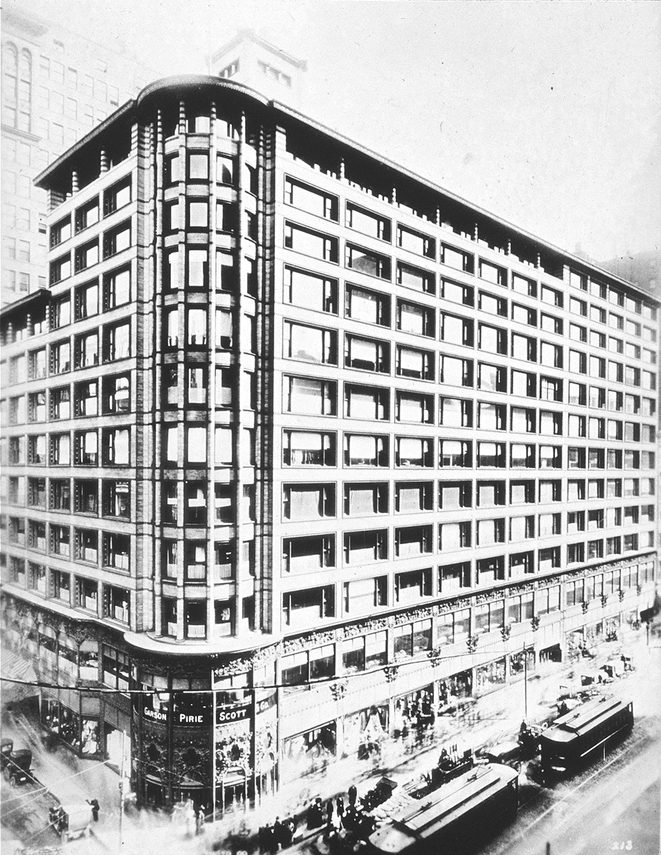One of the most recognized buildings in Chicago is the Sullivan Center. The history of the building extends back to the Chicago Great Fire of 1871 when displaced merchants, Leopold Schlesinger and David Mayer decided to relocate their dry goods store to the corner of State and Madison. After moving into the Bowen building, the businessmen had grander plans for the site and hired renown architect Louis Sullivan to create a bold skyscraper. Sullivan constructed a magnificent steel-framed building detailed with terra cotta and bronze. He added a round corner entry for dramatic appeal that gave shoppers accessibility from State and Madison. The building boasted huge bay windows, which allowed merchandise to be displayed to pedestrians. The Sullivan Center became the prototype of 20th century department store buildings.
One of the most recognized buildings in Chicago is the Sullivan Center. The history of the building extends back to the Chicago Great Fire of 1871 when displaced merchants, Leopold Schlesinger and David Mayer decided to relocate their dry goods store to the corner of State and Madison. After moving into the Bowen building, the businessmen had grander plans for the site and hired renown architect Louis Sullivan to create a bold skyscraper. Sullivan constructed a magnificent steel-framed building detailed with terra cotta and bronze. He added a round corner entry for dramatic appeal that gave shoppers accessibility from State and Madison. The building boasted huge bay windows, which allowed merchandise to be displayed to pedestrians. The Sullivan Center became the prototype of 20th century department store buildings.

Schlesinger & Mayer doors opened in 1903 but closed in 1904 due to financial problems. Rival retailer, Carson Pirie and Scott moved in the building and hired Daniel Burnham to complete the final additions in 1906. The retailer occupied the space for over 100 years and the building was known as the Carson Pirie Scott & Company Building. The Sullivan Center became a Chicago landmark in 1970 and National Historic Landmark in 1975. Last year Target moved into the historical building and opened its first store in downtown Chicago.

Schlesinger & Mayer doors opened in 1903 but closed in 1904 due to financial problems. Rival retailer, Carson Pirie and Scott moved in the building and hired Daniel Burnham to complete the final additions in 1906. The retailer occupied the space for over 100 years and the building was known as the Carson Pirie Scott & Company Building. The Sullivan Center became a Chicago landmark in 1970 and National Historic Landmark in 1975. Last year Target moved into the historical building and opened its first store in downtown Chicago.